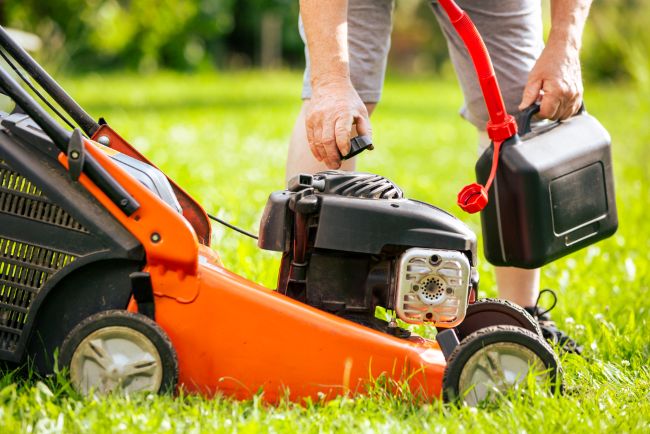Lawn Mower Maintenance Tips Keep Your Cutter Running Smoothly

There’s nothing more frustrating than a mower that simply won’t start, just when your lawn needs it most. But with a bit of routine care, that frustration disappears. Regular maintenance means smooth starts, sharp cuts, and a lawn that looks like it’s being kept up by a pro.
Maintenance also keeps your engine running fuel-efficiently, protects vital parts from wear and rust, and most importantly, keeps you safe. A few small habits go a long way in saving you time, money, and lawn-related headaches down the line. So, follow these practical maintenance steps so your mower stays efficient, reliable, and safe for every season.
1. Keep Fuel Fresh & Prevent Carburettor Clogs
If your mower stays idle for more than a month (we’re talking about winter, lawn lovers), add a fuel stabiliser to prevent it from turning into varnish or sludge that can clog the carburettor. Especially at the end of the season, it’s best to stabilise or fully drain fuel before storage. This simple step will help you avoid costly (or extremely frustrating) carburettor cleaning later.
2. Oil Change & Lubrication
Engine oil breaks down over time due to heat, dirt, and combustion by-products. If left unchanged, it can thicken and lose its lubricating properties, which can lead to more engine wear or even seizure. Aim to change the oil after every 25–50 hours of use, or at least once a season.
Before draining, run the engine for a few minutes to warm the oil – it flows out more easily that way. Once emptied, refill with high-quality mower oil to the level indicated on the dipstick.
Don’t forget to also lubricate moving parts like wheel bearings and control levers to keep everything running smoothly.
3. Spark Plug & Battery Health
The spark plug is small but essential – it’s what ignites the fuel and air mixture that powers the engine. Over time, deposits can build up on the plug, causing poor starts, reduced power, or rough running. Replace it annually or after about 100 hours of use, and check the gap before installing a new one for best performance.
While replacing a part might seem tricky, garden hire spares are surprisingly easy to obtain, so this needn’t be a stress.
For cordless electric mowers, the battery is the igniting force. Keep the terminals clean, avoid letting the battery fully discharge, and store it indoors during winter to extend its lifespan. A healthy spark plug or battery means faster starts and fewer mowing interruptions.
4. Sharpen & Balance the Blades
Sharp mower blades don’t just make your lawn look better – they’re actually important for the health of your lawn. A clean cut helps grass recover quickly, while dull or chipped blades tear at the blades of grass, leaving them ragged and prone to disease. This also forces the engine to work harder, which wastes fuel and puts strain on the motor.
Aim to sharpen your blades at least two to three times during the growing season, or more often if you mow frequently or hit debris. Always inspect for nicks, cracks, or warping, and replace damaged blades instead of getting them involved in another mow. After sharpening, balancing the blade is crucial to avoid excess vibration, which can damage the spindle and cause uneven cutting.
5. Clean the Deck & Underbody
Grass clippings and soil build‑up under the deck reduce airflow, increase rust risk, and can clog the discharge chute. After each use, tilt the cooled mower and wash or brush away debris. Use compressed air or a blower to reach tight spaces, and follow with a dry wipe-down to help prevent rusting.
6. Air & Fuel Filter Care
A clean air filter is needed for proper airflow, which is crucial for efficient combustion. Clean or replace annually or when visibly dirty. For models equipped with a fuel filter, inspect and replace periodically to ensure clean fuel delivery.
7. Tyres & Mechanical Components
If your mower has pneumatic tyres, check their pressure occasionally, as low tyre pressure can tilt the mower deck, resulting in an uneven cut and extra strain on the engine. Also, while you’re at it, inspect wheels, springs, nuts, bolts, and handle joints – tighten or lubricate as needed.
8. Proper Storage: Winter Smartly
Before winter storage:
- Run the engine until the fuel is depleted, or add stabiliser if fuel remains
- Clean the mower thoroughly and store it indoors – a garage or dry shed is ideal
- Remove the battery (if applicable) and keep it in a cool, dry spot
- Lubricate moving parts, hoses, and metal joints to prevent rust
9. Practice Seasonal Cutting Best Practice
Always follow the one‑third rule: Never cut more than one-third of the grass height in a single session. This promotes even growth and prevents stress on the turf. Adjust the deck height as grass grows fast in spring and slows in autumn.


